Excellent study material for all civil services aspirants - begin learning - Kar ke dikhayenge!
ISRAEL PALESTINE AL-AQSA CLASH
Read more on - Polity | Economy | Schemes | S&T | Environment
- The story: Serious violence broke out between Israeli police and Palestinians, at the Al-Aqsa mosque site in May. On 08th of May, an estimated 90,000 people gathered for nighttime Laylat al-Qadr prayers at Al-Aqsa, the third-holiest site in Islam. The Laylat al-Qadr or the “Night of Destiny”, prayers are considered the most sacred.
- Events:
- Jewish settlers are trying to evict long-term Palestinian residents from East Jerusalem’s Sheikh Jarrah; Lower Court supported it, Supreme Court appeal pending
- There had been a “repeated cycle of clashes and calm” in the area between Palestinian protesters throwing plastic bottles and Israeli security forces deploying stun grenades and foul-smelling skunk water.
- An Arab Israeli NGO called on senior Israeli officials to order security forces to halt their “violent incursions” into the Al-Aqsa Mosque and refrain from using excessive force against Palestinian worshippers and medical personnel.
- Tensions mounted in the city, the occupied West Bank and Gaza throughout the Muslim holy month of Ramadan, amid growing anger about the potential eviction of Palestinians from East Jerusalem homes on land claimed by Jewish settlers.
- On 10th of May (Jerusalem Day), Israeli police stormed the Al-Aqsa mosque compound in East Jerusalem, leaving hundreds injured. It marked the fourth day of clashes at one of the most revered and the most contested sites of the Palestinian-Israeli conflict. That led to a reaction from Hamas, that fired rockets into Israel.
- Israeli Air Force attacked the region after Hamas fired several rockets at Israel, following the expiration of the group’s ultimatum demanding Israel stand down forces from the Al Aqsa Mosque compound in Jerusalem. Israel’s army said it had hit 130 “military targets” in Gaza, killing 15 “Hamas and Islamic Jihad operatives” in retaliatory strikes after Palestinian groups launched a flurry of rockets towards Israel.
- US lawmaker Ilhan Omar said that "Israeli air strikes killing civilians in Gaza is an act of terrorism. Palestinians deserve protection. Unlike Israel, missile defense programs, such as Iron Dome, don’t exist to protect Palestinian civilians.:
- The four members of the Middle East Quartet – the US, Russia, the EU and the UN – expressed “deep concern” over the violence in Jerusalem. The Envoys noted with concern the possible evictions of Palestinian families from homes they have lived in for generations, and opposed the unilateral actions, which will only escalate the already tense environment. They called upon Israeli authorities to exercise restraint and to avoid measures that would further escalate the situation during this period of Muslim Holy Days.
- Various aspects:
- Six Day War – The 1967 Arab–Israeli War (or Third Arab–Israeli War) was fought between 5 and 10 June 1967 between Israel and Jordan, Syria, and Egypt. Relations between Israel and its neighbours were not normalised after the 1948 Arab–Israeli War. In 1956 Israel invaded the Sinai peninsula in Egypt, to reopen the Straits of Tiran that Egypt had blocked to Israeli shipping since 1950. Israel was eventually forced to withdraw, but was guaranteed that the Straits of Tiran would remain open. A United Nations Emergency Force (UNEF) was deployed along the border, but there was no demilitarisation agreement.
- Al-Aqsa – The Al-Aqsa Mosque is located in the Old City of Jerusalem, and is the third holiest site in Islam. It was built on top of the Temple Mount, known as the Al Aqsa Compound or Haram esh-Sharif in Islam. Muslims believe that Muhammad was transported from the Great Mosque of Mecca to al-Aqsa during the Night Journey. Islamic tradition holds that Muhammad led prayers towards this site until the 16th or 17th month after his migration from Mecca to Medina, when Allah directed him to turn towards the Kaaba in Mecca. Since 1967, the Jordanian Islamic Waqf has been in charge of the holy site, while Israel oversees external security. Non-Muslims are only allowed to visit the compound during specified hours and are not allowed to pray there.
- Al-Haram al-Sharif – The Temple Mount or Haram al-Sharif is the most contentious religious site in Jerusalem. It is revered by Jews at the location of two biblical temples and is the holiest site in Judaism. The compound houses the Dome of the Rock, and the al-Aqsa mosque, the third holiest shrine in Islam.
- Jerusalem – It is a city in Western Asia, on a plateau in the Judaean Mountains between the Mediterranean and the Dead Sea. It is one of the oldest cities, considered holy to the three major Abrahamic religions—Judaism, Christianity, and Islam. Al-Aqsa is central to the rival claims over Jerusalem. Both Israel and Palestine have declared it their capital. In July 1980, the Israeli Parliament passed the Jerusalem Law declaring it the country’s capital. Palestinians declared Jerusalem the capital of the putative state of Palestine by law passed by the Palestinian Authority in 2000.
- History of the region – In 1947, the United Nations drew up a plan to divide Palestine between Jews and Palestinians, leading to the creation of Israel. Since then, the Al-Aqsa compound has been under UN administration. Palestinians decry the increasing Israeli encroachment over the site, which intensified after the 1967 war, which resulted in an Israeli occupation of East Jerusalem, where the Old City and the Mosque are located. While non-Muslims have not been allowed to worship at Al-Aqsa, Jewish individuals and groups have made repeated attempts to gain entry to the Mount Temple plaza.
- World reactions: The UAE had recently recognised Israel as a state and sealed a historic peace agreement to normalise relations with it, but has now “strongly condemned” the clashes and the planned evictions in Jerusalem. It has asked Israel to protect the sanctity of the Al-Aqsa. Saudi Arabia, which has given its tacit blessings to the “Abraham Accords” by not opposing Israel’s recognition by UAE, Bahrain, Morocco and Sudan, has said it “rejects Israel’s plans and measures to evict dozens of Palestinians from their homes in Jerusalem”. Pakistan Prime Minister Imran Khan said he condemns Israel for “violating all norms of humanity and international law". Israel, meanwhile, remained firm and said it was only maintaining law and order.
- The Trump angle: As President, Trump stoked the fire by giving a new plan - the eighth-century site, regarded by Muslims as the third holiest site in Islam and important for all three Abrahamic faiths, would be under Israeli control. Thousands of Palestinians had gathered urgently at the holy site to show that the city, where the al-Haram al-Sharif or the Noble Sanctuary is located, would remain the “undivided capital” of Israel. They said that the deal was humiliating and unacceptable, and Trump wanted to deny access to Al-Aqsa. “Even if it requires sacrificing all our blood, Palestine’s capital will always be Jerusalem,” said the protestors in 2020.
- Gaza Strip is a 363 square km are along the Mediterranean Sea northeast of the Sinai Peninsula. It is a densely settled area not recognized as a de jure part of any country. Most people living in refugee camps, and there may be more than 15 lakh living there. Living conditions are poor due to increasing population; inadequate water, sewage, and electrical services; high unemployment; and, from September 2007, sanctions imposed by Israel. Agriculture is the economic mainstay and the chief crop, citrus fruit, is exported to Europe.
- History - After rule by the Ottoman Empire ended in World War I (1914–18), the Gaza area became part of the League of Nations mandate of Palestine under British rule. The General Assembly of the United Nations (UN) in November 1947 accepted a plan for the Arab-Jewish partition of Palestine under which the town of Gaza was for Arabs. The British mandate ended on May 15, 1948, and on that same day the first Arab-Israeli war began. Egyptian forces soon entered the town of Gaza, which became the headquarters of the Egyptian expeditionary force. This area became the Gaza Strip, boundaries demarcated in Egyptian-Israeli agreement of 1949. It was under Egyptian military rule from 1949 to 1956 and again from 1957 to 1967. Neither Egypt nor Israel allowed Palestinians to move out, and many young ones became fedayeen (Arab guerrillas operating against Israel).
- In the Sinai campaign during the Suez Crisis of 1956, the strip was taken by Israel. The strip reverted to Egyptian control in 1957. In the Six-Day War of June 1967, the Gaza Strip was again taken by Israel, which occupied the region for 25 years. In December 1987 rioting and violent street clashes between Gaza’s Palestinians and occupying Israeli troops was known as the intifada (“shaking off”). In 1994 Israel began a phased transfer of governmental authority in the Gaza Strip to the Palestinian Authority (PA) under the terms of the Oslo Accords that were signed by Israel and the Palestine Liberation Organization (PLO).
- The Palestinian government of Yasser Arafat, struggled, and the threat of terrorism from militant Muslim groups such as Islamic Jihad and Hamas, which refused to compromise with Israel. In late 2000, a breakdown in negotiations between the PA and Israel was followed by more violence, termed the second intifada. In September 2005 Israel completed the pullout from the territory, and control of the Gaza Strip was transferred to the PA, although Israel continued to patrol its borders and airspace.
- In the 2006 PA parliamentary elections, Fatah — which dominated Palestinian politics since 1950s — lost to Hamas, prompting sanctions by Israel, US and EU. The Gaza Strip was the site of escalating violence between the competing groups, and a short-lived coalition government was ended in June 2007 after Hamas took control of the Gaza Strip and a Fatah-led emergency cabinet took control of the West Bank. Despite calls by PA Pres. Mahmoud Abbas for Hamas to relinquish its position in the Gaza Strip, the territory remained under Hamas’s control.
- West Bank is an area of former British-mandated (1920–47) territory of Palestine west of the Jordan River, claimed from 1949 to 1988 as part of the Hashemite Kingdom of Jordan but occupied from 1967 by Israel. The 5,650-square-km area is the centre of contending Arab and Israeli aspirations in Palestine. Within its boundaries, it represents the portion of the former mandate retained in 1948 by the Arab forces that entered Palestine after the departure of the British. The area was established by the Jordanian-Israeli armistice of 1949. Its population is more than 29 lakhs.
- Upon the British forces' departure in May 1948 and proclamation of the State of Israel, the armies of five Arab countries entered Palestine. In the ensuing conflict — the first of the Arab-Israeli wars — Israel expanded beyond the territory contemplated by the partition plan. The West Bank, as demarcated by the Jordanian-Israeli armistice of 1949, was broadly similar to (but smaller than) one of the zones designated as an Arab state by the United Nations (UN) partition plan for Palestine in 1947. According to that plan, Jerusalem was to have been an international zone. However, the city was instead divided into Israeli (west) and Jordanian (east) sectors.
- The Arab state whose creation was envisioned by the 1947 UN partition plan never came into being, and the West Bank was formally annexed by Jordan on April 24, 1950, although this annexation was recognized only by Great Britain and Pakistan. From 1950 until it was occupied by Israel in the Six-Day War of 1967, the West Bank was governed as part of Jordan, though it was divided from the Jordanian population of the East Bank by the Jordan River.
- During the 1967 war, Israel occupied the West Bank and established a military administration throughout the area, except in East Jerusalem, which Israel incorporated into itself, extending Israeli citizenship, law, and civil administration to the area.
- This period of relative calm began to wane during the late 1970s and early ’80s as Israel began a more aggressive course of establishing settlements. By the early ’80s the settlements numbered in the scores. Land, businesses, and buildings were expropriated from the Palestinian inhabitants, many of whom were long absent, having fled the wars of 1948 and 1967.
- In 1988 Jordan’s King ?ussein renounced all administrative responsibility for the West Bank, thereby severing his country’s remaining connections with the area. Meanwhile, anti-Israeli protests broke out among the Palestinians of the West Bank in December 1987.
- In 2006 parliamentary elections, Fatah suffered a decisive loss to Hamas, reflecting years of dissatisfaction with Fatah’s governance. The victory of Hamas, a terror group, led to boycotts from Israel, US and EU. The increasingly violent power struggle between Hamas and Fatah resulted in a split between the West Bank, run by Fatah through the emergency PA government, and the Gaza Strip, controlled by Hamas. Israel and other members of the international community moved to aid the West Bank, offering shows of economic and diplomatic support for Abbas and Fatah while blockading the Gaza Strip.
- Golan Heights is a hilly area overlooking the upper Jordan River valley on the west. The area was part of Syria until 1967, and then came under Israeli military occupation, and in December 1981 Israel annexed it.
- In 1894 the French-Jewish banker Baron Edmond de Rothschild bought a large tract of land for Jewish settlement in the Golan; he was followed by other groups in the United States, Canada, and Europe. Jewish colonization was frustrated by the hostility of Arab population and by the Ottoman land laws, which forbade settlement by non-natives.
- After World War I the Golan became part of the French mandate of Syria and in 1941 passed to independent Syria. After the Arab-Israeli War of 1948–49, Syria fortified the western crest of the Golan Heights, which commands the ?ula Valley, the Sea of Galilee, and the upper Jordan River valley, all in Israel. In these sections many Israeli civilians were killed by Syrian artillery and sniper fire.
- On the last two days (June 9–10, 1967) of the Six-Day War, the Israeli armed forces, after defeating Egypt and Jordan, turned their attention to Syria.
- The Syrian defenders and most of the Arab inhabitants fled, and Syria asked for an armistice; fighting ceased on June 10. The heights were placed under Israeli military administration, and Golan was integrated into the framework of Israel.
- A disengagement agreement between Israel and Syria, signed following the Yom Kippur War of October 1973, established a United Nations buffer zone in the Golan Heights, monitored by a UN Disengagement Observer Force (UNDOF). The UNDOF mandate was renewed every six months thereafter.
- Negotiations between Syria and Israel started in 1991, continued until they broke down in 2000 over Syria’s insistence on Israel’s full withdrawal. Discussions renewed in 2008 through the mediation of Turkey, which was then a close ally of both countries, but talks fell apart. In March 2019 the United States became the only country to recognize Israel’s annexation of the region.
- Hamas and Fatah are the two most dominant parties in the Palestinian political scene.
- FATAH is a reverse acronym for Harakat al-Tahrir al-Filistiniya or Palestinian National Liberation Movement in Arabic. The word Fatah means to conquer.
- Under Yasser Arafat, and after the 1967 Arab-Israeli War, Fatah became the dominant party in the Palestinian Liberation Organization (PLO).
- HAMAS is an acronym for Harakat al-Muqawamah al-Islamiyya, or Islamic Resistance Movement. The word Hamas means zeal.
- The Hamas movement was founded in Gaza in 1987 by imam Sheikh Ahmed Yasin and aide Abdul Aziz al-Rantissi shortly after the start of the first Intifada, or Palestinian uprising against Israel’s occupation of the Palestinian territories. The movement started as an offshoot of the Muslim Brotherhood in Egypt.
- In May 2021, the two announced a deal to end a decade-long rift that brought them to an armed conflict in 2007.
- Hamas has been the de facto ruler in the Gaza Strip since 2007, after defeating President Mahmoud Abbas’ long dominant Fatah party in parliamentary elections. Hamas then pushed Fatah out of Gaza when the latter refused to recognise the result of the vote.
- Hamas and Fatah have ruled the occupied Palestinian territories of the Gaza Strip and the West Bank respectively ever since.
- Ideology: Hamas – Islamist, Fatah – Secular
- Strategy towards Israel: Hamas – Armed resistance, Fatah – Negotiations
- Objectives: Hamas – Does not recognise Israel, but accepts a Palestinian state on 1967 borders, Fatah – Recognises Israel, wants to build a state on 1967 borders
* Content sourced from free internet sources (publications, PIB site, international sites, etc.). Take your own subscriptions. Copyrights acknowledged.







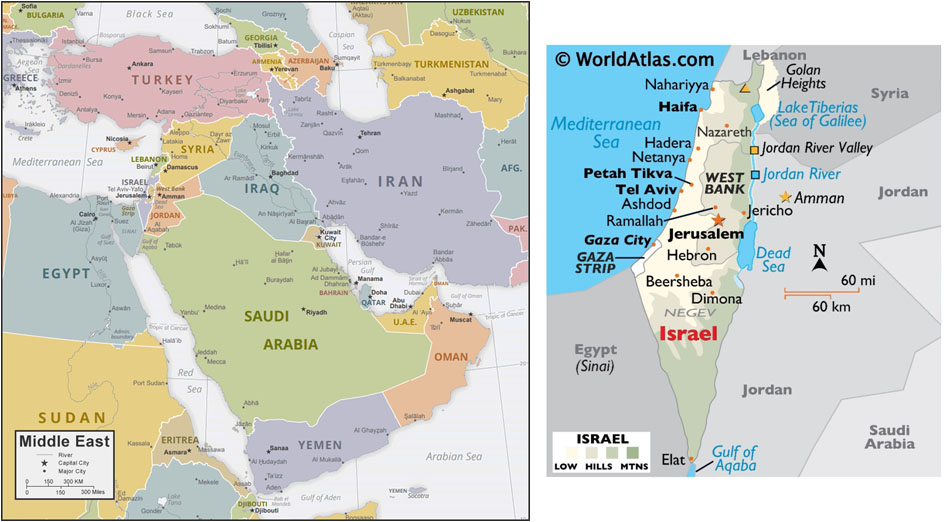

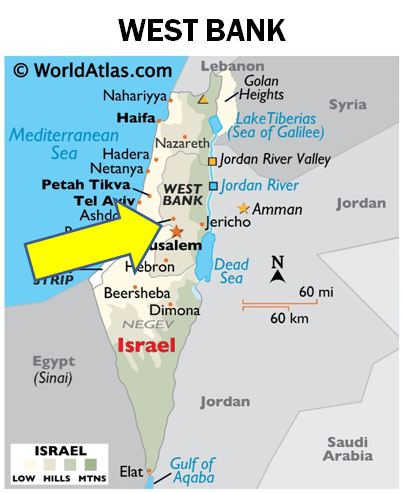
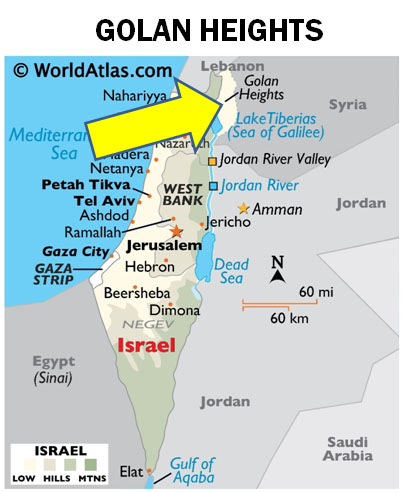






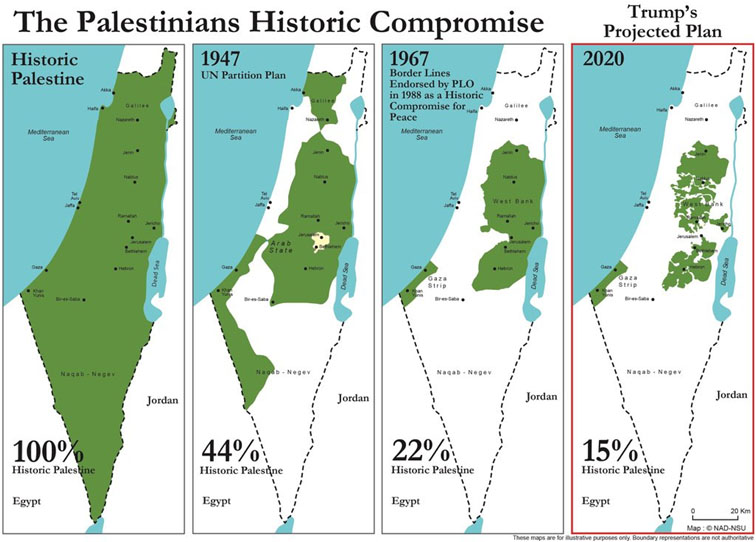
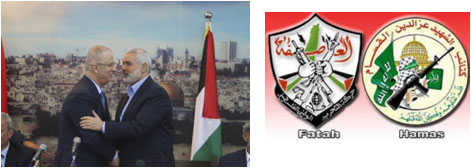














COMMENTS